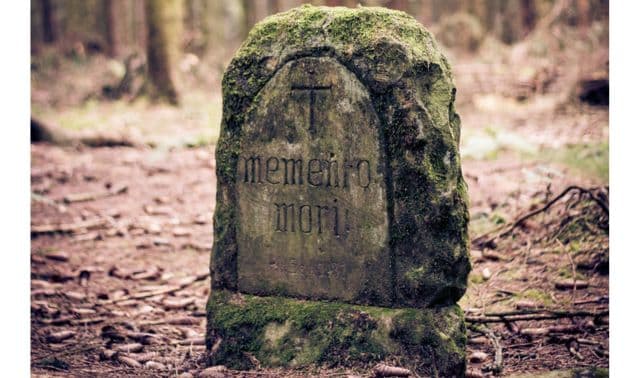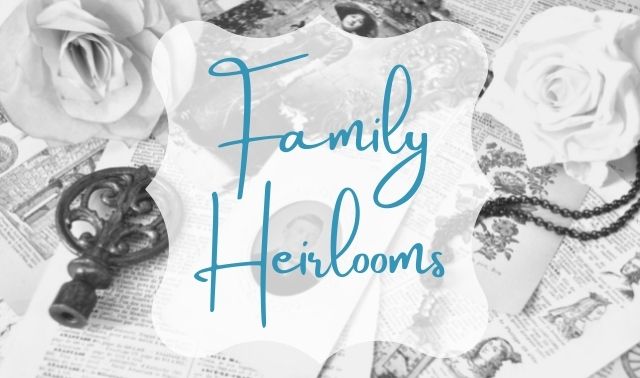Sign up for the Family Tree Newsletter! Plus, you’ll receive our 10 Essential Genealogy Research Forms PDF as a special thank you.
Hunters often return home with trophies for their living rooms, perhaps a black bear rug or the head of an eight-point buck. To sportsmen, these trophies are meaningful mementos, bringing to mind successful outings and establishing an identity as provider, protector or conqueror.
Genealogists have trophies, too, albeit gentler ones. We put an ancestor’s photo in a place of honor, drape an heirloom quilt in the bedroom or hang well-worn carpenter’s tools over the fireplace. In doing so, we remind ourselves of loved ones and identify with our ancestors
But not everyone is lucky enough to inherit fantastic family heirlooms. Stuff gets lost through generations. Sometimes you’re not in the right place at the right time—or in the right frame of mind—to claim a family treasure. Some of us do have family items, but we don’t know much about them and long for more meaning.
We asked three heirloom hounds how they track down family artifacts that can be treasured as trophies. Their tips will help you find heirlooms—or surrogate heirlooms—both at home and in marketplaces such as antique stores and
eBay.
1. Set your sights
Heirlooms are more than genealogical souvenirs. They’re tangible reminders of loved ones, good times and long-dead ancestors. An artifact doesn’t have to be expensive artwork, silver, jewelry or furniture to qualify as an heirloom. In fact, we often find more meaningful connections to the past through smaller, everyday items such as Grandma’s pie-crust rolling pin, dad’s military discharge documents, wedding photos or a needlework sampler.
Denise Levenick, author of How to Archive Family Keepsakes: Learn How to Preserve Family Photos, Memorabilia & Genealogy Records (Family Tree Books) and the
Family Curator blog, recently found this to be true. After their mother passed away, Levenick and her sister went through their mother’s home. They lined up on a shelf the things they wanted to keep. “It was a motley collection,” she recalls with a laugh. “There was a pair of Regency bookends and a ceramic owl bank. That bank was where my dad put his change after work every day when he came home. We realized that these were our heirlooms: These were the things we lived with day after day, with memories tied up in them.”
Older heirlooms that date a few generations back may hold no personal memories, but they tie us to our ancestors’ lives in intimate ways. “Heirloom hunting takes our genealogical experience to a new level,” says Joy Shivar, owner of heirloom exchange service
JustaJoy. “Often an heirloom can broaden our idea of who an ancestor was and reveal information about our families that can’t be found anywhere else. Paper items especially can reveal place, connections, dates and other information. Plus, it’s just exciting to discover that your great-great-great-grandfather swore allegiance to the temperance movement or knew how to play a banjo or whatever.”
Besides figurines, uniforms or medals, try to identify other objects that were connected to your ancestor’s life. “People are becoming more aware of what’s out there now, the different places where an ancestor’s name might show up,” says Nancy Howell, an eBay genealogical document dealer. “Think about old letters, billheads [forerunners to store receipts], letterheads, photos, employment and military records, advertising, deeds and certificates. A lot of our ancestors in the 1800s were members of various organizations, including fraternal organizations like the Freemasons. There’s related paperwork out there in the form of applications, certificates of membership and more.”
Don’t rule out “surrogate” heirlooms—items that have a family connection but weren’t actually in your family. Shivar recently helped unite a country club’s 1940s plaque with a championship volleyball player whose name was listed on it. “The family would never have owned that themselves, but it’s got the family’s name on it, and it’s a really cool thing to have,” she says. Yearbooks, group photos, autograph books and ads for a family business may fall into this category. See the box on the next page for places to locate these artifacts.
Even if you don’t find anything connected to your family, it’s fun to track down items that represent your ancestors. Look for artifacts related to their trade, ethnicity, religion—any aspect of their lives that interests you. It might be a shoemaker’s boot form, tartan, photo of your ancestor’s church, or piece of scrip from a coal company store. Consider finding duplicates of items you recall from a loved one’s home, such as a framed print or a piece from the same china or silver pattern (Replacements Ltd. is one source for old dinnerware).
2. Home in on hunting grounds
The best place to start heirloom hunting is at home. “The more stuff you have stored in your attic, basement or garage, the more likely you are to have an unidentified heirloom hiding away somewhere,” Levenick says. “But even folks with little clutter might have a treasure or two they just don’t recognize.”
In going through the family home for an estate sale, her husband found favorite children’s books in a bookcase, a walking stick he’d made for his dad tucked in a closet, and his old pinewood derby car in the garage. “Each of those items held special ‘heirloom’ memories for him,” Levenick says.
She isn’t shy about designating new heirlooms from her own family, such as the children’s fork and spoon her boys used as toddlers and their handprints impressed in a concrete walkway. “They’re heirlooms just as much as my grandfather’s pipe,” she says. “It helps to think like a descendant and try to imagine the kinds of things your children and grandchildren will cherish from your life.”
If your parents and other older relatives are still living, talk to them about the stories of the heirlooms in their homes. This is a great way to capture their memories as well as show your interest in family artifacts. Write down the stories and ask permission to photograph the items. It’s not quite the same as acquiring the item itself, but the information is still valuable.
Most of the time, it’s not inappropriate to let relatives know that “you eventually would like to have anything they want to pass on,” advises Levenick. “Maybe your mom tucked away something for you and has forgotten about it.” Be tactful: Don’t jump in front of someone else’s legitimate claim to the family album, and keep requests modest. Levenick cautions that some folks are too attached to their belongings or uncomfortable with their own mortality to talk about the subject. But your interest may be remembered: You never know who may someday contact you with a family treasure.
Distant cousins also may be fruitful heirloom sources. Maybe your second cousin has Great-grandma’s hope chest or Great-grandpa’s rifle. Go as far up the family tree as you care to and then back down (perhaps with the help of Family Tree University’s video course on finding living relatives). Fewer heirlooms may be available the further back in time you go, and multiplying descendants means items are more far-flung. When making contact, offer information about your shared ancestry to prove your connection. If family artifacts exist, ask politely about purchasing them or having photographs or copies made. If a relative remarried, look for your family’s heirlooms among that new family: They might have kept items they’d be willing to sell or give away.
3. Head into the wild
Once an heirloom has strayed from the family fold, many people assume it’s gone forever. That may have been true 20 years ago. But today, online services offer the equivalent of tracking devices for missing artifacts. You simply search out these services and hope your heirloom has been (or will yet be) tagged for easier tracking.
EBay is a well-known hunting ground for lost heirlooms, and a great place to find surrogate ones. There you’ll find sellers including Howell (seller name: genpaper) who spent more than 10 years rescuing boxes of family documents from oblivion. Now her massive collection is stacked sky-high, and she’s beginning to list parts of it online.
Howell recommends starting your eBay search with the Collectibles & Art category, then Collectibles. Your keyword searches can include surnames and names of neighborhoods, churches, schools, family businesses or industries, towns, counties and other terms relating to your ancestors. If you get too many results or want a specific type of item, limit your search to subcategories. For example, look for diaries, autograph books and store ledgers under Books, Antiquarian and Collectible.
If you don’t find anything, contact sellers who specialize in the materials or geographic location you’re interested in and ask them to watch for particular items. To have new listings automatically emailed to you, create a free eBay account and identify favorite sellers or search terms.
It can be frustrating to search for artifacts on eBay, especially if your surname is common or has another meaning (think Hill or Church). Shivar’s JustaJoy is based on items’ associated surnames. Antique dealers and other “heirloom rescuers” post detailed descriptions of items, including associated surnames. For example, a listing for a Civil War muster roll will include every soldier’s name. Subscribers are notified when items are listed with their surnames of interest. Even after an item sells, its description stays on the site for future reference.
You never know what else is out there. One man googled a military veteran grandfather’s name and found that his dog tag was recovered by a family in England. Olive Tree Genealogy’s
Lost and Found Dog Tag Project had posted the find, and the family was reunited with the tag.
You can hunt for heirlooms offline, too. Howell recommends contacting antique and rare book dealers near your ancestral hometown. Describe specific types of items you’d be open to purchasing, both those relating to your family (such as letters or a Bible) and general items that represent the time and place (a ladies’ club recipe book or school yearbook). If you’re interested in documents and the seller doesn’t deal in paper, ask who would be a good person to contact. Shivar suggests attending antique, military and Civil War shows, which you can find listed at sites such as
TravelersAntiqueGuide (click on Antique Shows).
4. Value your catch
Good hunters know their hunting grounds and the prey they’re after. So do artifact hounds. This may involve learning about different kinds of heirlooms and the prices they command. Howell starts with pricing guides such as Kovels’ Antiques & Collectibles Price Guide 2012 by Terry and Kim Kovel (Black Dog & Leventhal) and the ephemera-specific Warman’s Paper by Norman E. Martinus and Harry L. Rinker (Warman). Collectibles guides, which often come in handy pocket sizes, exist for many types of items: toys, dishes, pottery, textiles and militariana. Howell also consults auction site listings of comparable items.
But collectibles pricing can vary widely, Howell cautions, and you have to separate monetary value from sentimental value. “Rarity and desirability have a lot to do with it,” she says. “One person’s trash is another’s valuable treasure, and vice versa.” In the end, “an item is worth only what the market will bring”—the market being other buyers such as collectors and dealers. Shopping around before purchasing items will help you become familiar with both quality artifacts and appropriate prices. Setting informed goals about what you want to buy and how much you’re willing to pay will help you end up with meaningful, display-worthy genealogical trophies.
Once she has an artifact in hand, Levenick learns more about its origin, when it was made and how it was used by contacting experts. “Veterans associations, historical societies, senior centers, collectors—there’s likely someone out there who has an interest in your artifact, and they will often help you,” she advises. She finds help by searching Google for the object name and terms such as history or museum, often ending up at obscure websites manned by fans or collectors.
For example, a search on pocket watch museum brings up results from the
National Association of Watch and Clock Collectors, which has links to resources for the public. Searching for silver tea set collector leads to a Collector’s Weekly web page with information on
antique sterling tea and coffee sets. If your item has a manufacturer’s mark on it, look it up online (using the manufacturer name or search terms like antique porcelain marks) or consult a guide such as Pictorial Guide To Pottery And Porcelain Marks by Chad Lage (Collector Books).
For military items, Shivar consults members of military lineage organizations, such as the
Sons of the American Revolution, and battle re-enactors. She also recommends asking questions of dealers at antiques shows. “Find someone there you trust who deals in the kind of item that you have. Because of their love for the business and the items, dealers are usually more than happy to share their knowledge. They can offer advice on the best way to preserve the item, insurance value, where to find more information, and possibly even present a comparable [artifact].”
5. Care for your trophies
The final step to claiming heirlooms is learning to care for them. For storage and display, use museum-quality boxes, albums, frames and folders from archival product suppliers such as those listed at
familytreemagazine.com/article/archival-suppliers. Keep your heirlooms in an environment with stable temperature and humidity levels (no attics or basements) and away from direct sunlight. For storage, a closet in the living area of your home—but not one on an exterior wall—is best.
For many game hunters, the ultimate reward isn’t just a mounted head on a wall, but the dressed meat that stocks his freezer for the season. Similarly, a meaningful heirloom can feed your family memory and deepen your appreciation for your heritage. These genealogical trophies—the items themselves and the stories and connections they represent—become part of your legacy. So if you don’t already own meaningful heirlooms, it’s time to start tracking some down. Happy hunting.
Contributing editor Sunny Jane Morton’s favorite heirloom trophy is a stuffed Kanga doll her grandmother made.
From the October/November 2012 issue of Family Tree Magazine.



